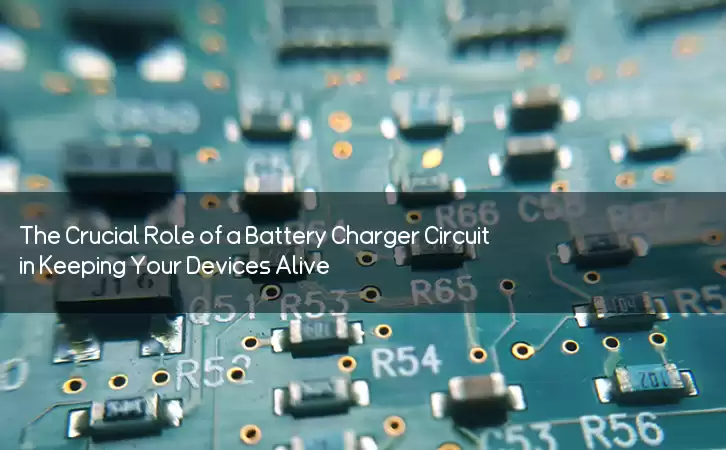Information Center
The Crucial Role of a Battery Charger Circuit in Keeping Your Devices Alive
Published:2023-08-21 10:33:23 Author:Green WCND Views:54Battery Charger Circuit: An Introduction

A battery charger circuit is an electronic circuit that is designed to recharge batteries. It is an essential device in today’s world since a wide range of portable electronic devices relies on rechargeable batteries. These batteries are found in cell phones, laptops, tablets, cameras, and many other devices. Therefore, a battery charger circuit is critical for keeping these devices up and running.

The design of a battery charger circuit depends on the type of battery it will charge. The most commonly used batteries are lead-acid batteries, nickel-cadmium (Ni-Cd) batteries, nickel-metal-hydride (Ni-MH) batteries, and lithium-ion batteries. Each type of battery requires a different charging circuit design to ensure proper charging and to avoid overcharging or damaging the battery.
The basic principle of a battery charger circuit is to control the voltage and current going into the battery. There are two main types of battery charger circuits: constant voltage and constant current. A constant voltage charger delivers a fixed voltage to the battery, while a constant current charger delivers a fixed current to the battery. In most cases, a combination of both types of chargers is used, as this ensures that the battery is charged efficiently and safely.
The charging process of a battery typically involves three stages: bulk charging, absorption charging, and maintenance charging. During bulk charging, the battery is charged at a constant current until it reaches a certain voltage. Then absorption charging begins, where the charger delivers a constant voltage while gradually reducing the charging current. Finally, maintenance charging maintains the battery’s charge by delivering a small current to the battery to compensate for self-discharge.
The key components of a battery charger circuit are the transformer, rectifier, voltage regulator, and charge controller. The transformer steps down the voltage from the mains power supply and isolates the circuit from the mains. The rectifier converts the AC voltage to DC voltage. The voltage regulator controls the output voltage of the charger, while the charge controller manages the charging process.
In conclusion, a battery charger circuit is a highly essential device in today’s world. It enables the efficient and safe charging of rechargeable batteries and ensures that our portable electronic devices remain operational. The design of a battery charger circuit depends on the type of battery it will charge, and the charging process typically involves three stages. The key components of a battery charger circuit are the transformer, rectifier, voltage regulator, and charge controller. With these components working together, a battery charger circuit can provide reliable and safe charging for a wide variety of electronic devices.
Power Adapter Design and Customization Guide for Portable Electric KettlesI. Common Design Types for Portable Electric Kettle Power AdaptersPortable electric ke···
I. Common Design Types of Power Adapters External Independent Type (Most Common) Design: A standalone adapter (e.g., "black brick") connected to the p···
Handheld Vacuum Cleaner Power Adapter Selection GuideIntroductionHandheld vacuum cleaners have become a mainstream tool for household cleaning due to their port···
Drill Power Adapter Selection Guide.drill-container { font-family: Arial, sans-serif; line-height: 1.6; max-width: 800px; margin: 0 auto; padding: 20px; } .dril···





